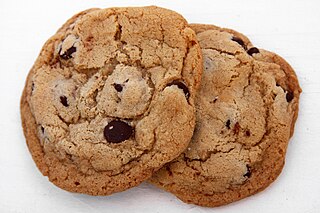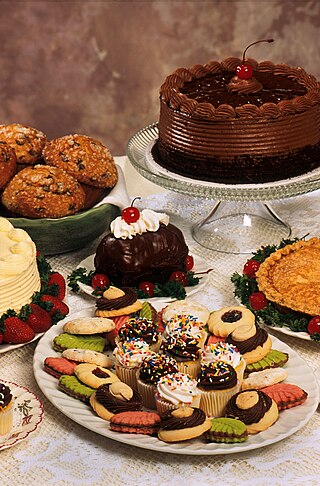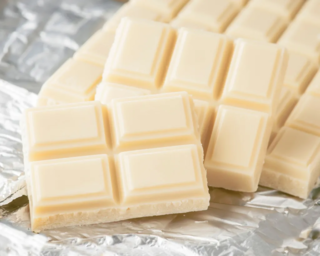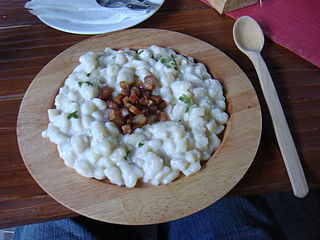What is chocolate?
- Chocolate – raw or processed food produced from the seed of the tropical Theobroma cacao tree. [1] The seeds of the cacao tree have an intense bitter taste, and must be fermented to improve the flavour. Chocolate is a popular ingredient in confectionery items and candies.
What type of thing is chocolate?
Chocolate is a type of:
- Food – substance to provide nutritional support for the body, ingested by an organism and assimilated by the organism's cells in an effort to produce energy, maintain life, and/or stimulate growth.
- Confectionery – the set of food items that are rich in sugar, any one or type of which is called a confection. Modern usage may include substances rich in artificial sweeteners as well.
- Candy – confection made from a concentrated solution of sugar in water, to which flavourings and colourants are added. Candies come in numerous colours and varieties and have a long history in popular culture.
- Ingredient – substance that forms part of a mixture (in a general sense). For example, in cooking, recipes specify which ingredients are used to prepare a specific dish. Chocolate is often used as an ingredient in dessert items, such as cakes and cookies.
- Confectionery – the set of food items that are rich in sugar, any one or type of which is called a confection. Modern usage may include substances rich in artificial sweeteners as well.
What is chocolate made of?

Necessary ingredients
- Cacao bean – Fatty seed of Theobroma cacao
- Chocolate liquor , also known as chocolate mass – Pure cocoa mass in solid or semi-solid form
- Cocoa butter – Pale-yellow, edible fat extracted from the cocoa bean
- Cocoa solids – Mixture remaining after cocoa butter is extracted from cocoa beans
- Chocolate liquor , also known as chocolate mass – Pure cocoa mass in solid or semi-solid form
Substances found in cacao
- Antioxidants – Compound that inhibits the oxidation of other molecules
- Caffeine – Central nervous system stimulant
- Phenethylamine – psychoactive drug that is usually inactive when orally ingested because most of it is metabolized into phenylacetic acid by monoamine oxidase (MAO), preventing significant concentrations from reaching the brain [2] [3]
- Theobromine – also known as xantheose, [4] it contains no bromine [5] and has a similar, but lesser, effect to caffeine
- Theophylline – methylxanthine drug found in tea leaves
Source of cocoa
- Theobroma cacao , also known as Cacao tree – Species of tree grown for its seeds
- Child labour in cocoa production – Controversial use of children in the production of cacao beans
- Africa
- Asia
Types of cocoa
- Types of cocoa beans
- Flavor cocoa – type of cocoa
- Bulk cocoa













